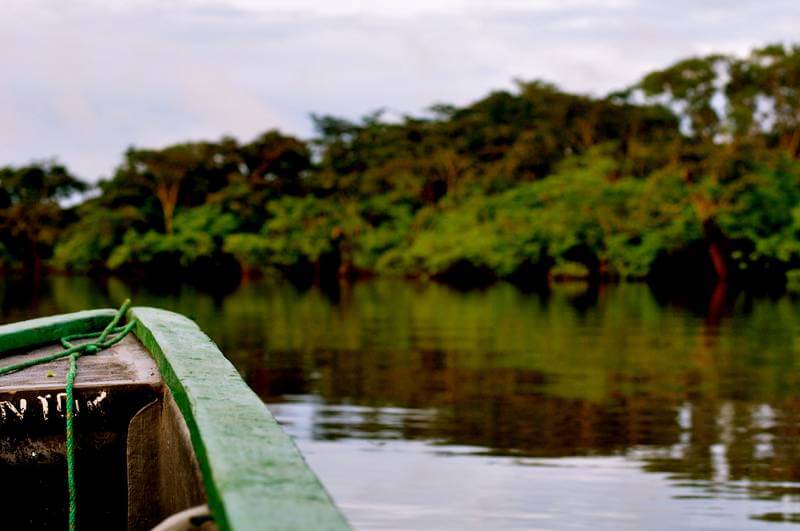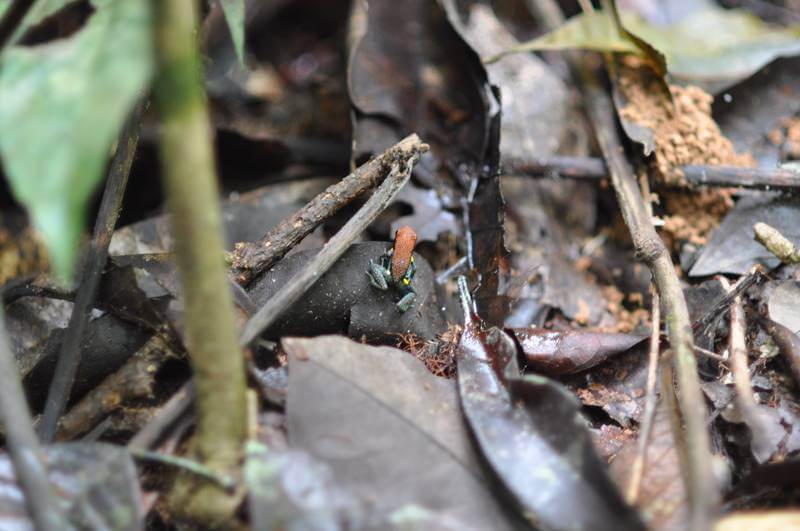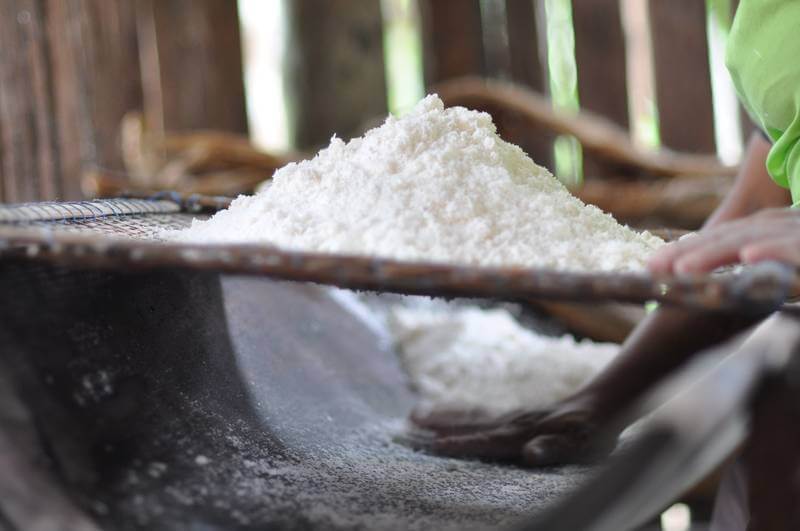The Ecuadorian Amazon, one of the country’s most treasured ecosystems, is the epitome of what we stand for: adventure. It is a place that engages the thirst for adrenaline as much as it does the jitters for its unexplored depth. The Cuyabeno Wildlife Reserve holds it all in one corner: the small critters, the big reptiles, and of course, the thrill of experiencing it yourself!
The Amazon’s importance for Earth’s biodiversity has been particularly emphasized in our current struggle against climate change. As the world’s largest tropical rainforest, it holds more plant and animal species, fresh water, and biodiversity than any other place on the planet. All of this has become conventional knowledge; people associate the Amazon with life itself, with animals bigger than humans, and abundant wilderness. But the Amazon is spread across 9 South American countries, meaning the diversity within its borders is greater than it seems on a large scale, and far greater than we can begin to understand.
Ecuador’s largest mainland region, the Oriente, is made up almost in its entirety by the Amazon: it envelops six provinces, including Morona Santiago, Napo, Orellana, Pastaza, Sucumbios, and Zamora Chinchipe. Even though Ecuador’s share of the Amazon is small, it is a rich host to some of the highest concentrations of trees, birds, plants, and species on Earth. With the objective of protecting and sharing this biodiversity with the world, Ecuadorian national parks and reserves work alongside the region’s indigenous communities to promote sustainable ecotourism. Thanks to these efforts, visitors can witness one of Ecuador’s most rich and plentiful ecosystems in a guided way that also considers the communities that have been living there for millennia.
Despite its share being small in comparison to other countries (Brazil has nearly two-thirds), Ecuador’s Amazon has one of the best infrastructures for ecotourism, giving visitors an accessible, affordable (at least relatively), and fun opportunity to experience the Earth’s cradle first-hand. Amazon tours are relatively similar in the types of activities they offer. However, distance from Quito (and other transportation hubs) and length of tour do affect cost. It’s worth noting that most Amazon tours generally depart from the three hubs below, meaning you’ll have to factor in a trip from Quito or any other city to these hubs in the Oriente. Most tour operators include this in their itineraries as a bus trip, but flights are available and you’ll have to inquire about them specifically if you’re interested:
- Lago Agrio – Capital of the Sucumbíos province, Lago Agrio is also Ecuador’s northernmost hub in the region. This is the connecting hub for the Cuyabeno Wildlife Reserve and the Limoncocha Biological Reserve, which differ in infrastructure and cost-effectiveness (Limoncocha is less developed and thus, more affordable). A trip from Quito to Lago Agrio by bus between 8-10 hours. Amazon tours departing from Lago Agrio then take a truck or van to the mouth of the reserve/river, and then begin a two-hour canoe ride to the lodges.
- Coca – Located in the Orellana province, Coca intersects both the Coca and Napo Rivers, and is about a 10 hour bus ride from Quito. It is the connecting hub for Yasuní National Park, the Huaorani Reserve (also known as the Huaorani Protectorate), the Limoncocha Biological Reserve, and some parts of the Cuyabeno Reserve (although these last two are more commonly and easily reached via Lago Agrio). Generally, because of its proximity to Yasuní, lodges around this transit point tend to be more expensive.
- Tena – Capital of the Napo province, Tena is generally considered less remote than the other transportation hubs mentioned here, but the city’s infrastructure is considerably more developed. Many visitors using this transit point to the Amazon take day trips, as opposed to staying at remote lodges for multiple days (such as in Cuyabeno). This day-trip experience is understandably less remote, diverse, and also less abundant in wildlife, but it is an option nonetheless. Tena is a connecting hub for the Jatun Sacha Biological Station, the Sumaco Napo-Galeras National Park, and Puerto Misahuallí.
All that to say, you have many options for choosing our Amazon tours from Quito or any other tourism hotspots in Ecuador. Whether you want to “rough it” for a few days or really need hot showers and high-end meals, the Ecuadorian Amazon will have something that suits you. So, why do we highlight the Cuyabeno Wildlife Reserve? Well, for starters, we think if you have the chance to visit Ecuador’s Amazon at its depth, you should take it. Cuyabeno offers that, in addition to a concentration of lodges that range from affordable to fancy, and more in between. But most importantly, because we’ve experienced it first-hand and can attest to its lush charm and the thrilling adventure that awaits you there!


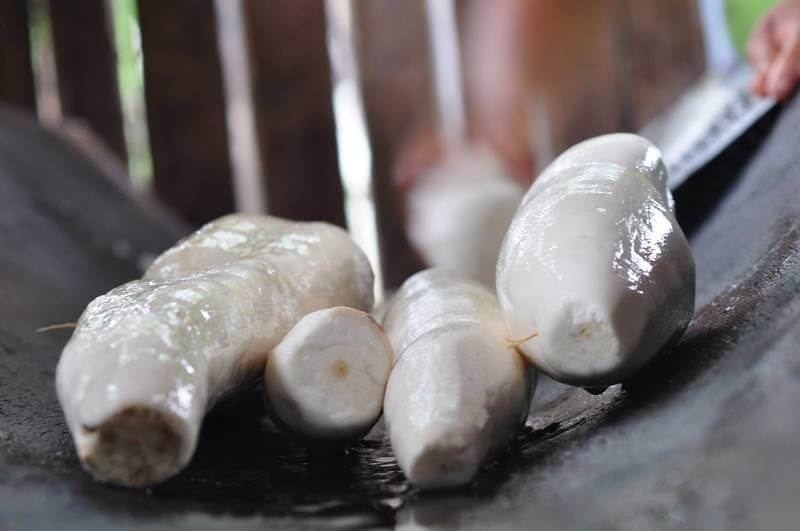
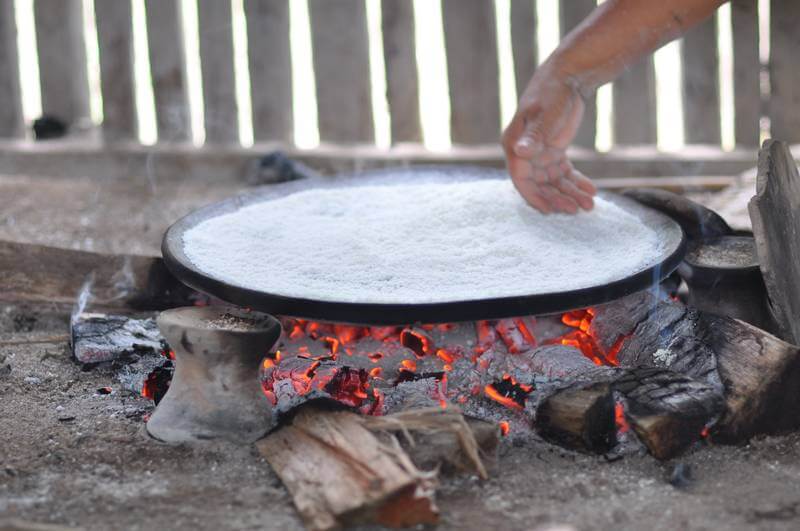
ABOUT THE CUYABENO WILDLIFE RESERVE
The Cuyabeno Wildlife Reserve is spread across 6,034 km² in Ecuador’s Napo and Sucumbíos provinces, and it is most easily reached via the transit hub of Lago Agrio. The Cuyabeno River, its tributaries, as well as the Aguarico and San Miguel Rivers make up Cuyabeno’s water sources. Additionally, Cuyabeno has a system of 14 lagoons called Imuya that is especially full during the wet season and surrounded by igapó forest (meaning it is primarily black-water flooded). Laguna Grande, its biggest lagoon, is a green oasis surrounded by lowland rainforest, and you can enjoy one of the most stunning sunsets on Earth at its center
Cuyabeno’s natural endowment owes itself to its evolutionary history: once a part of the Pleistocene refuge, the evolution of its wildlife and plants has been continuous, even during periods in which surrounding areas were frozen still. As a result, biological diversity in Cuyabeno (and in Ecuador, generally speaking) is one-of-a-kind, and an abundant concentration of tropical richness and allure. Cuyabeno is home to over 500 species of birds, 350 species of fish, and 100 species of mammals. Among them, 10 different species of monkeys are especially amusing to spot, as well as an entire cosmos of fascinating critters such as the zesty lemon ant.
But the full story of the Ecuadorian Amazon, the Cuyabeno Wildlife Reserve included, is not all kumbaya. Cuyabeno was designated a protected area in 1979, but its boundaries were subject to many changes afterwards, due to the oil boom and the push to extract as much petroleum from the area as possible. This attack on Cuyabeno’s biodiversity, and that of the Amazon in general, was met with resistance from its indigenous communities and various NGO’s. But even though this resistance stirred the conversation towards sustainability, the region continues to battle exploitation in many forms.
CUYABENO’S INDIGENOUS COMMUNITIES
Before we get into depth about the wildlife that abounds at the Cuyabeno Wildlife Reserve, we believe its human inhabitants merit a formal introduction and some recognition. The Ecuadorian Amazon’s indigenous communities are few among the Amazon’s nearly 200 communities (or better said, nations), but their presence is threatened and growing ever more important as the area suffers from invasion, extraction, and climate change. They are the real gatekeepers of the rainforest’s secrets: its rhythm, its animals, its plants, and its collective history. In recognition of the wisdom only they can offer, and to honor their right to activity on their land, many lodges are involved with the indigenous communities to offer more responsible tourism.
CUYABENO’S WILDLIFE
If your idea of a jungle tour involves iconic animals, the Cuyabeno Wildlife Reserve is for you! The sheer concentration of species in the region is astounding and will keep you on the edge (of your canoe, that is) for the duration of your stay. Moreover, the variation within species will overwhelm you — who knew there were more than 500 types of tropical birds in one space?! There are also 350 species of fish, in addition to the more common creatures like the capybara, tapir, and the many, many monkeys – 10 species of monkeys, in fact!
Below are some of the most beloved animals of the Cuyabeno, all of which you are likely to see if you pay attention to your guide and look close enough:
- Between 500-600 species of birds (including scarlet macaws and toucans!)
- Pink freshwater dolphins
- Caimans
- 10 species of monkeys (including the red howler and squirrel monkeys, and the only nocturnal monkey in the world!)
- Lowland Tapirs
- 350 species of fish (including paiche and piranhas)
- Snakes (tree boas and anacondas)
- River otters
- Frogs and toads
- Turtles
Watching these animals engage with their natural habitat, and each other, is surreal. Nothing beats spotting the tiniest monkey in the world (the pygmy marmoset) sucking sap from a tree, listening to the synchronized croaking of frogs and toads at night, and feeling your canoe sway to the rhythm of dolphins following schools of fish. Not to mention the world of critters among the trees: ants, grasshoppers, spiders, lizards, they will all make it so that your walk through the rainforest is as noisy as it will be enchanting!
It is quite possibly the only place in the world where an igapó – the Portuguese word describing the blackwater-flooded root forests found only in the Amazonian jungles — is located at the foot of a mountain range, resulting in a wide array of flora and fauna that are found nowhere else. This nearly permanent swamp hosts dolphins, two species of otters, two species of deer, piranha, and much more.
The Cuyabeno is also home to the more common species of Amazonian jungle wildlife. Countless rodents, bats, insects, and snakes scramble about the mosses, vines, and lichens beneath the jungle’s canopy of tropical trees and wide fronded plants. Boa and anacondas, jaguars and puma, and innumerable frogs and toads round out the incredible collection of the wildlife reserve.
Igapó accounts for less than 3% of the entire Amazonian ecosystem, making Cuyabeno one of the most interesting regions in the world. Biologists, botanists, wildlife enthusiasts, backpackers and hikers, and kayakers will revel in the sheer abundance of wildlife unique to the area, and bring back photos and personal stories filled with features found nowhere else on earth!
And, the Cuyabeno Park consists of several other geographical and topographical features that harbor hundreds of more species of protected plant and wildlife. The lowlands and highlands provide drier soil that sustains a wide array of trees not found in the swampier lands, while the River itself attracts every manner of creature in the area.
Wildlife Conservation
We have all heard the stories about the depletion of the Amazon Rainforest, which has sadly been going on for decades and continues to this day. The Amazon Rainforest is often called “the lungs of the world” due to its significant contributions to air quality and oxygen levels, and demands immediate action to preserve. The interaction of the climate and the rainforest is a complicated, and closed circuit, system of water and carbon dioxide filtering and exchange which cannot be replaced. Yet, almost nothing is being done to protect this precious region which accounts for as much as 20% of all the breathable oxygen in the earth’s atmosphere.
Studies suggest that human activity has resulted in the loss of as much as 10% or more of the rainforest’s trees in the last 50 years alone! Given this widespread devastation, compounded with the pollution and industrial waste from across the globe, the carbon dioxide levels have risen to dangerous heights, which has lead to widespread disease, and can even be tied to the extinction of hundreds of forms of both plant and animal life.
Of course, it not only provides one of the essential components for human life, it is also home to several tens of thousands of insects, birds, lizards, mammals, and fish found in no other region on earth – most of which have yet to even be identified! Changes to this delicate ecosystem have resulted in massive ramifications to other localized ecosystems all over the globe, which has impacted both the world’s climate and weather patterns in what is accurately known as “The Butterfly Effect.”
Preserving this rainforest is paramount to protecting the earth, the environment, and quite literally all forms of life. But, decades of neglect and illegal logging, mining, and drilling have taken their toll.
By visiting the Cuyabeno Wildlife Park, tourists can not only record history as it currently stands (and hopefully will for many generations to come), but also be part of an emerging method of alternate, economic support for the area which now relies on logging, unsustainable industrial fishing, and drilling for oil. Hopefully, one day, tourism and other economic models based on ecological sustainability will replace those that are destroying the Amazon rainforest and damaging the environment.
Simply visiting the Cuyabeno Wildlife Park is a step in the right direction and provides much-needed funding to keep the rainforest and its wildlife thriving and protected.
CUYABENO LODGES AND ECOTOURISM ACTIVITIES
The variety of ecotourism lodges in the Cuyabeno Wildlife Reserve provide ample options for every kind of traveler. While they mainly vary in location, cost, and amenities, most engage the traveler in similar activities: animal spotting, bird watching, day and night jungle walks, leisurely canoeing, sunset watching at Laguna Grande (and swimming in it if you’re up for it!), and visiting the local communities. Most lodges have a structured itinerary with designated days and times for each activity, while also giving guests room to explore on their own (if your lodge has a bird-watching tower, this is a great solo activity!).
Our personal favorites are animal spotting and sunsets at Laguna Grande. The guides at Cuyabeno lodges are so experienced and knowledgeable, they can spot a bird from a mile away! They do a great job of engaging you in their graceful search for wildlife, often giving you hints about an animal’s location so you can experience the thrill of spotting it yourself. After long days walking through the jungle and learning more than you thought possible about all sorts of animals, most lodges end the day with a canoe ride to Laguna Grande, where you can enjoy the sunset and the harmonious buzz of critters transitioning into the night.
Below is a listing of Cuyabeno lodges we recommend. We suggest looking further into each for details that might influence your decision, and information to better prepare for your stay. Cuyabeno lodges are mostly built from ecological materials (wood, bamboo, straw) and each have multiple cabins with a variety of room arrangements (private and dorms). All are equipped with electricity and water, although each will vary in their availability (and how plentiful the hot water is!) Most offer tours from 3 days/2 nights – 5 days/4 nights.
- Cuyabeno Dolphin Lodge ($260-330): Cuyabeno Dolphin Lodge offers 3-day, 4-day, and 5-day tours. It is a 20-minute canoe ride from the Laguna Grande. From the hammocks at their pier, you can spot freshwater dolphins (hence the name!)
- Cuyabeno Lodge ($100-635): Cuyabeno Lodge was the first in the reserve, so it pioneered ecotourism efforts and prides itself on that. It is located right on the Laguna Grande. They offer 4-day and 5-day tours, with an option to also visit Papallacta on the way to Lago Agrio.
- Cuyabeno River Lodge ($220-300): Cuyabeno River Lodge offers 3-day, 4-day, and 5-day tours. They can arrange for a direct bus from Quito to Cuyabeno, which cuts travel time (but should be arranged beforehand and price isn’t included in the itinerary). In addition to many other activities, they take their guests on early morning bird walks upon request!
- Siona Lodge ($340-420): Siona Lodge offers 4-day and 5-day tours, and is known to have some of the best cabins in the reserve. Their main lodge has a spacious dining area, fully equipped with a bar, and their food is reputed for its quality!
- Guacamayo Lodge ($250-350): Guacamayo offers 3-day, 4-day, and 5-day tours. For the avid birdwatchers, they also offer a 6-day tour specifically tailored to spotting the world’s most fascinating bird species.
- Jamu Lodge ($262-406): Jamu offers 3-day, 4-day, and 5-day tours. They are located 15 minutes down the river from Laguna Grande. The heart of their lodge, their dining area, is spacious and also features a bar!
- Green Forest Lodge ($250-395): Green forest offers 3-day, 4-day, and 5-day tours. Their fourth day includes an opportunity to kayak the black waters of the Cuyabeno River, which you won’t want to miss!
Whichever lodge you choose, remember that your greatest companion will be a thirst for adventure and fearless exploration. Visiting the Ecuadorian Amazon is a one in a lifetime experience, and one that lives up to our globe-trotting ethos: travel, learn, and contribute to the preservation of the Earth’s most valuable ecosystem! See our Cuyabeno Jungle Tour!
What can you do in the Cuyabeno Wildlife Reserve?
Ecuador’s celebrated Cuyabeno Wildlife Reserve is the second largest protected area in the Amazonian region, with just under 1-1/2 million acres! Located at the foot of the Andes mountain range, its unusual interior is almost inaccessible except by the narrow Cuyabeno River for which it is named.
However, recent roadways have opened up the area to tourists who can enjoy the park’s vast biodiversity, engage in unique activities, and study the cultures of the indigenous tribes that have remained isolated from the rest of the world until very recently.
Visitors should pack lightly, as the vegetation is dense and very wet, but bring a poncho or raincoat, a blanket for the cool evenings, and a camera or camera-ready device with plenty of backup batteries. Internet connectivity is spotty, at best, and electrical outlets are not plentiful, so one should also keep this in mind when putting together a backpack.
What can you do in the Cuyabeno Wildlife Reserve During the Day?
As noted above, the river’s channel is so narrow that one can almost literally reach out and touch the teeming wildlife on either bank (but probably shouldn’t). Kayaking and canoeing is not just educational and enjoyable, it is necessary if one wishes to explore the interior of the park, as there are no other roadways.
The local cuisine is largely based on the many fish found in the rivers and lakes that make up the Cuyabeno Park, and includes recipes rarely found in the outside world. Boosted by the flavors of the indigenous herbs, mushrooms, and vegetables located nowhere but Amazonia, some dishes may challenge tourists’ palettes and even test the constitutions of their stomachs, but all are worth tasting!
It is also an opportunity to spend more time with the indigenous peoples of Amazonia and observe the culture and traditions of their everyday lives. While more and more people of the modern world take up Minimalism and seek to “declutter” their lives, these tribes have lived peacefully alongside one another for millennia, without electricity, telephones, Internet, or even plumbing, in some cases!
New roadways, telephone lines, and access to electricity and the Internet are certain to alter the region forever. While these advancements bring new opportunities, they also bring permanent change to an area that had remained unmolested until the late 20th Century. As industrial progress finds its way into the Amazonian jungle, now could be one of the last chances to visit this area and see it much as it once existed.
Sightseeing is a wonderful way to spend the day. Armed with nothing more than a camera and maybe an electronic tablet or notebook, one can while away the hours simply observing the interactions of the wildlife through the shadows playing on the leaves.
Many of the indigenous animals are diurnal and, despite the fact that it is often raining, the sun provides excellent lighting for capturing them in their natural habitat. Cinematic experiences await in the lush rainforest filled with brightly colored birds, multicolored snakes prowling amongst the glossy fronds, and mischievous monkeys swinging from vine to tree!
What can you do in the Cuyabeno Wildlife Reserve at Night?
Many species in the Cuyabeno region are nocturnal, so they are rarely, if ever, seen during the day. The moonlit nights provide fantastic opportunities for what could be award-winning photographs! While the jungle’s canopy is difficult to penetrate, the starlit nights – unaffected by the pollution of large city lights – still illuminate the ground floor and its many inhabitants.
Average daily temperatures normally range in the 70°s (Fahrenheit), though it gets slightly cooler at night. Depending on where one is, a light blanket should suffice, and the sounds and surroundings of the Amazon jungle provide the perfect backdrop for peaceful sleep. Of course, the rainforest also provides the perfect conditions for as many as 8,000 species of insects, so a tent (and possibly some bug spray) will also come in handy.
What can you do in the Cuyabeno Wildlife Reserve to Support the Local Community?
As mentioned previously, the Amazon Rainforest is classified as endangered due to rampant, and all too often illegal, corporate expansion and exploitation of the natural resources throughout the region. Sadly, these industries are too lucrative for both their owners and customers to be discontinued any time soon.
By promoting the local tourism trade, visitors are directly supporting the peoples and areas that matter most. If proven effective, this alternate economic model may one day replace even the most financially prosperous endeavors that ravage the jungle today. To those ends, choosing Cuyabeno for a vacation means taking a vacation with a purpose.
The local communities can also find means of supporting themselves through crafts and souvenirs, in addition to working as tourist guides for visitors, researchers, and sightseers. In particular, professional photographers, researchers, scientists, and explorers will find a wealth of information and subjects in the Cuyabeno Wildlife Reserve, including the peoples of the indigenous tribes and their way of life.
Learn About Indigenous Cultures
No fewer than eight indigenous tribes thrived in this region with almost no contact to the outside world prior to the 1980s (when the first roadways were built). These are the Sionas, Cofanes, Shuaras, Secoyas, Huaoranis, Quichuas, Achuar, and the Zaparos tribes.
Visitors will learn the traditional method for making cassava bread, recipes based on the local flora and fauna that have been passed down for centuries, as well as more about the spiritual traditions that have sustained the Sionas and other tribes for millennia. One or more of the communities’ shamans will speak to tourists about the traditions, history, and rich culture of the Siona Indian Tribe.
As mentioned, these peoples and their way of life has been disconnected from our modern world until very recently. Much of their culture, history, and traditions exists only in oral form. Recording these discussions for future generation of scholars could prove helpful in many forms of research, and possibly lucrative for budding and seasoned authors.
The Cuyabeno is unique for many reasons, but this particular opportunity is one of the most revered experiences for tourists to explore. Far beyond mere pictures, hearing the teachings of the indigenous tribes while being immersed in their traditional ways is priceless – even if it is for only a few days. These memories will last a lifetime and provide riveting conversational material for any occasion.
Relax!
There is little to no Internet connectivity in the midst of the Ecuadorian jungle, so it is the perfect place to turn off the phone, set your “Away” status, and simply relax.
Tucked deep in the verdant rainforest, far from the background noise of traffic, airplanes, and televisions, and surrounded by the unique sounds heard in few other places around the world, one can truly logoff entirely from the modern world and reconnect with Mother Nature.
Canoeing, hiking, ample opportunities for plant and wildlife photography – the Cuyabeno has more activities than you can fit into a lifetime, much less a week, and leaves no time for things like e-mails, newsfeeds, and snarky social media forums! Besides, once you return to your everyday life, you will have more stories, photos, and memories to share than anyone you follow.
But you do not have to be doing anything; the Cuyabeno is also the absolute best place to just be. Take the time to soak it all in and enjoy the peace of mind that only a place like the Cuyabeno Wildlife Reserve can provide.
The Cuyabeno Wildlife Reserve is not only a unique, absolutely one of a kind, vacation, it also supports the local economy, the Amazon Rainforest, and the environment. It is the perfect opportunity to actually enjoy doing one’s part for the environment, for others, and for one’s self.

